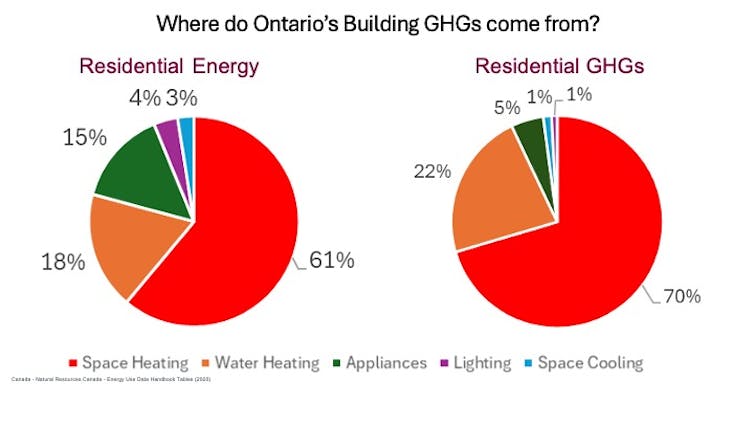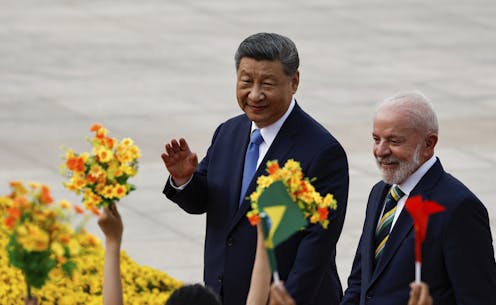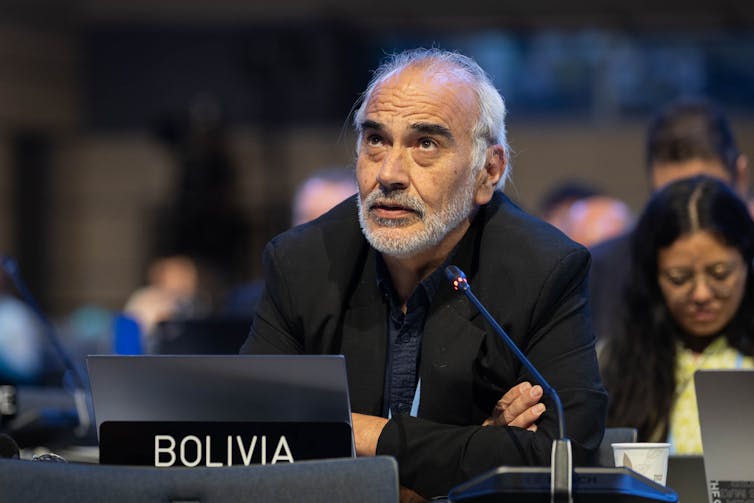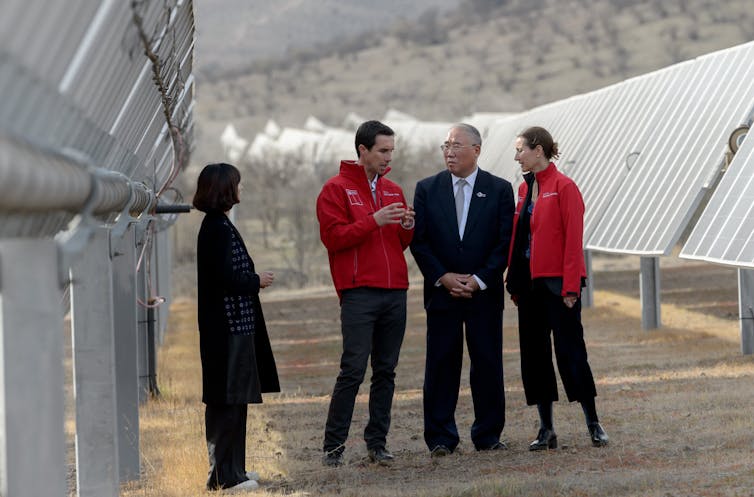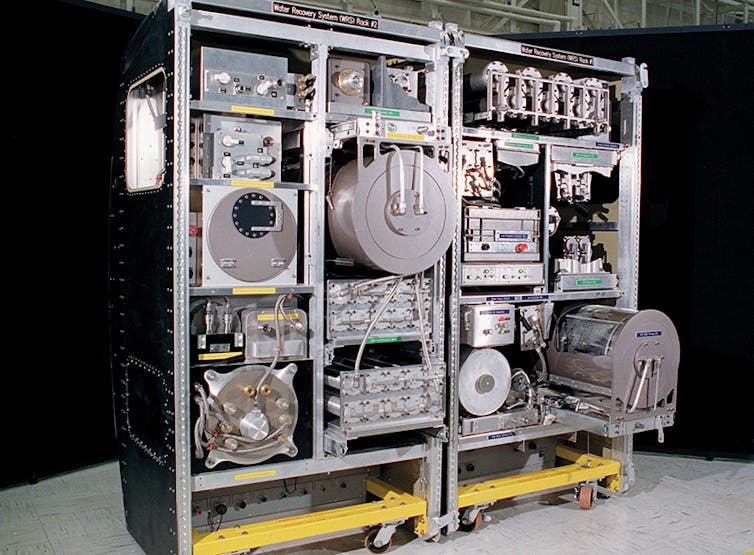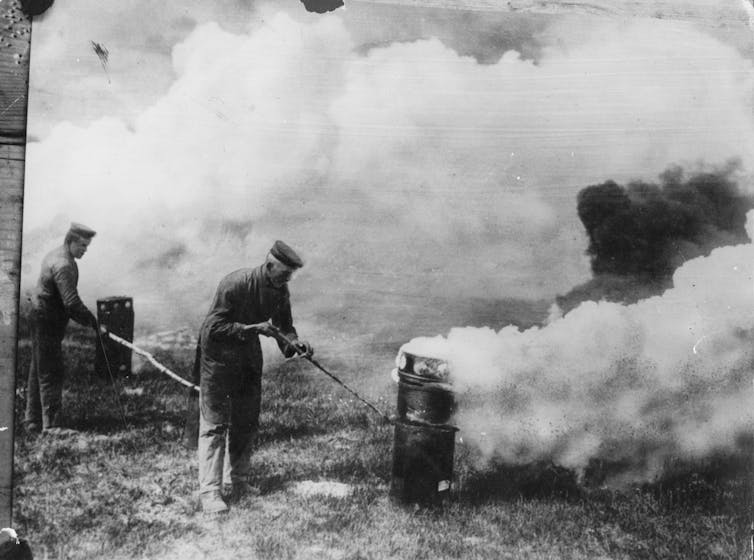Source: The Conversation – UK – By Ram Prasad, Fellow of the British Academy and Distinguished Professor in the Department Politics, Philosophy and Religion, University of Leicester
The British Museum’s Ancient India, Living Traditions exhibition brings together exhibits on the sacred art of Hinduism, Buddhism and Jainism. It also encompasses the spread of the devotional art of these traditions to other parts of Asia.
The exhibition speaks to religious identity and relationships. Buddhism and Jainism distinguish themselves from the vast surrounding traditions that together we call Hinduism; but they have close kinship with it in practices, beliefs and iconography. Museums that have presented sculptures in isolation have usually not attempted to narrate this complex history.
Not all the items displayed, some going back 2,000 years, are of purely historical interest. There are representations of traditions that are continuously living in a way the gods of ancient Egypt or classical Europe are not.
The most instantly recognisable example for visitors of such living ancient tradition is likely to be statues of the elephant-headed deity Ganesha. Visitors can see a rare and valuable 4th century sandstone Ganesha on show. They can also see a small bronze version of that ancient Ganesha that is like the kind you would find in people’s home and to which a quick prayer would be addressed every morning.
The question of how to respect that sense of the sacred while still mounting an exhibition is a moral and aesthetic challenge that few museums (including in India) have started to address. It’s not uncommon to see such pieces wrenched from the reality of their continued practice and presented in secular art displays. Here, however, the curators have tried to make connections between “statues” on display and “icons” in temples and homes.
Looking for something good? Cut through the noise with a carefully curated selection of the latest releases, live events and exhibitions, straight to your inbox every fortnight, on Fridays. Sign up here.
Finally, there’s the problematic history of the imperial museum and its need to reckon with its past. Most objects on display in this exhibition, and The British Museum more widely, have been presented with scarcely any acknowledgement of how they came to be acquired.
The exhibition makes an earnest effort to tackle most of these issues.
Ancient but not dead
The spaces of the exhibition are structured to be respectful of the historical and contemporary sensitivities of Buddhism and Jainism. This is signalled through subtle changes of colour and the placement of translucent drapery, allowing for transitions between distinct Jain, Buddhist and Hindu displays.
At the same time, conceptual and sensory commonalities are powerfully conveyed. The first space focuses on nature spirits and demi-deities that are shared across all the ancient traditions. The air is filled with the sound of south Asian birds and musical instruments. The explanatory labels draw attention to the percolation of iconographic features between traditions, for instance, those between the Buddha and the Jaina teachers, or the direct inclusion of the deity of learning (Sarasvati) in both Hindu and Jain worship.
Also well presented is a final space on the spread of south Asian iconography to central, east and southeast Asia. This is a long story that needs its own telling, but can only be hinted at through some beautifully chosen figures.
It’s the curators’ use of a community advisory panel of people who practice such traditions today that gives the information its sensitivity. Their inclusion in the exhibition’s production can be seen in a marked mindfulness that the content and symbols of these inert objects are alive and sacred to hundreds of millions.
For example, one Ganesha from Java in Indonesia draws attention to different elements of his iconography. There is the trans-continentally stable depiction of his having a broken tusk (which, as Hindus will know, he is said to have broken off to write down the epic Mahabharata). But this Ganesha also holds a skull, which is unique to the Javanese version. The label gently points out that “various communities understood and worshipped him differently”.
The combination of community engagement and creative presentation not only conveys a sense of respect for the traditions, but also elicits a respectful response from visitors. Those from within the tradition will note with satisfaction the description of a symbol or icon. Those from outside the traditions are invited to look at the exhibits with attention and care as they might in a cathedral.
I saw a pair of young Indian Americans looking at a fossilised ammonite from Nepal that is taken as a symbolic representation of god for worshippers of Vishnu. They animatedly compared it to the one in their own diasporic home.
Elsewhere in the exhibition, I caught an elderly English couple stood in wondering silence in front of a drum slab from the famous 1st century BC Amaravathi Buddhist site in south India. This slab was carved just before figural representations of the Buddha rapidly gained in popularity. Here, there are symbols associated with him, but the Buddha himself is represented by the empty seat from whence he has gone.
How did it all get here?
One potential interpretive danger lies in the emphasis on continuity between past objects and present realities. Hindus today from social backgrounds that did not have the privilege of reaching back to high sacred art might ask where they sit in the smoothed out historical narrative. More broadly, there is no acknowledgement of the complexity of Hindu identity and its formation across centuries, regions, social strata, languages and theologies.
The weakest part of this exhibition’s generally innovative retelling is the faint-hearted way in which it obliquely acknowledges the dubious acquisition process of the British Museum. To say something was “collected” by a major general “while serving in the East India Company army” is hardly facing up to the question with which the exhibition boldly begins: “How did it get here?”
This exhibition offers a powerful visual narrative of the multi-spiritual traditions of ancient India, mounted with sensitivity to their living communities today. Its immersive presentation is appealing, and the story it tells is respectful and innovative.
The task of honest self-representation and difficult conversations on reparation remain. Within that larger imperative, Ancient India, Living Traditions is a step in the right direction. It is a direction towards addressing context, responsiveness and engagement that museums can no longer ignore.
Ancient India, Living Traditions in on at The British Museum, London until October 19 2025
Get your news from actual experts, straight to your inbox. Sign up to our daily newsletter to receive all The Conversation UK’s latest coverage of news and research, from politics and business to the arts and sciences.
![]()
Ram Prasad does not work for, consult, own shares in or receive funding from any company or organisation that would benefit from this article, and has disclosed no relevant affiliations beyond their academic appointment.
– ref. Ancient India, Living Traditions: an earnest effort to show how the art of Hinduism, Buddhism and Jainism is sacred and personal – https://theconversation.com/ancient-india-living-traditions-an-earnest-effort-to-show-how-the-art-of-hinduism-buddhism-and-jainism-is-sacred-and-personal-262163



